Falling Down: The Last Lenins Of Ukraine
- By Amos Chapple
![When media outlets recently reported that Ukraine's last Lenin statue had been removed as part of Ukraine's decommunization drive, photographer Niels Ackermann was skeptical of the timing. "There had actually been announcements in December [2016] that the last Lenin statue had been removed, so I think they published this news now to connect it to what's happening in the U.S."](https://gdb.rferl.org/1b9762ec-f00f-4f76-b4c6-17102201ffc8_w1024_q10_s.jpg)

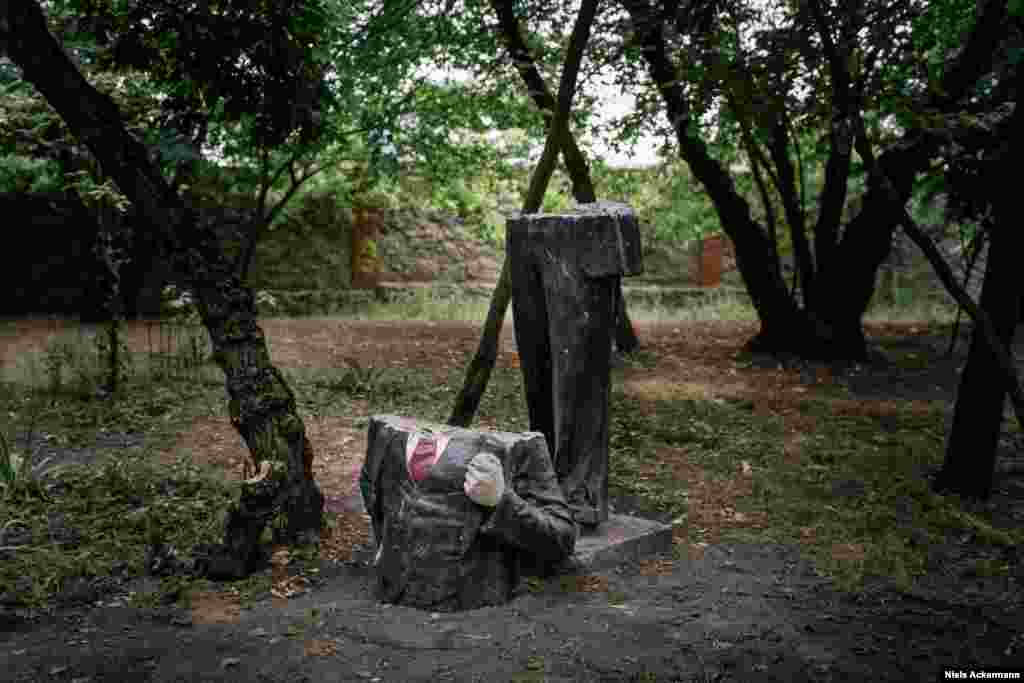
A dissected Lenin in eastern Ukraine
After his experiences documenting the fallen Lenin monuments of Ukraine, Ackermann has followed news about Confederate statues in the U.S. closely. "These monuments are a bit like scars -- when you have a bike accident and you get a big scar on your leg, you can't pretend it didn't happen. You look at it every day and remember that you weren't careful on your bike."
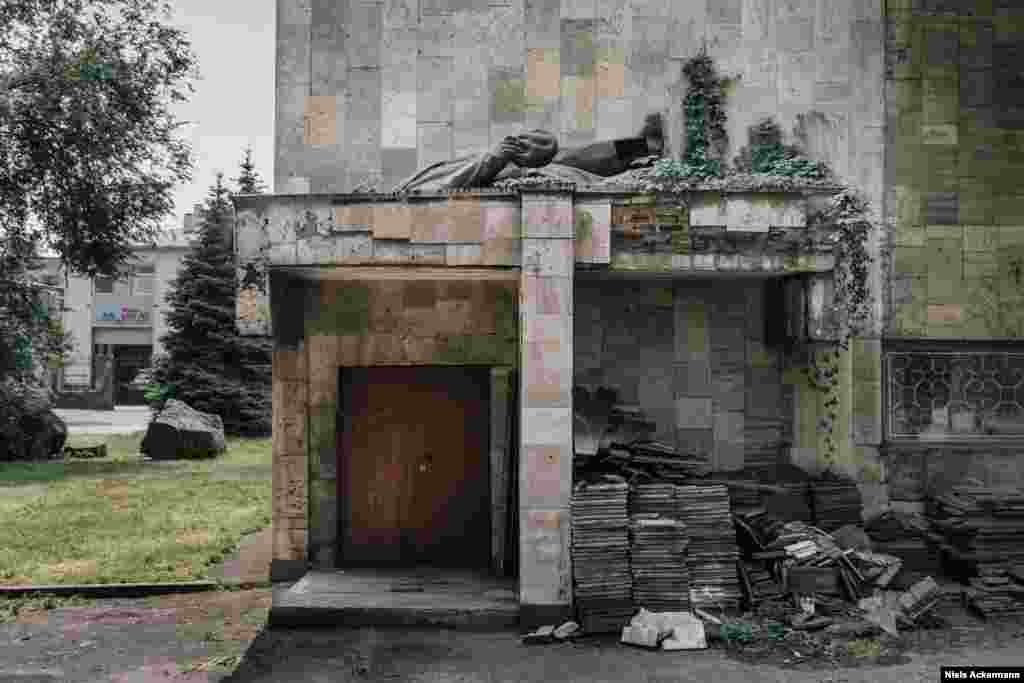
A bronze Lenin dumped out of reach of potential thieves in Kamianske
Ackermann says he also understands people who want to tear down monuments highlighting a painful past. "These statues, whether it's Lenin or Confederate generals, were made with a propaganda role -- they were put on a pedestal to promote a certain message. If you leave them as is, you keep that propaganda running."

A clipped Lenin monument in the Odesa region
In their project, Ackermann and Gobert used the voices of the Ukrainians they encountered while hunting for Lenin. Ackermann told RFE/RL: "It was important to show that there is not one opinion towards decommunization in Ukraine, there are 42 million."
![Detail of a fallen Lenin in Zaporizhzhya "You would have some people say, 'Lenin and his guys did horrible things to this country, so there is no reason to leave portraits of him in a [prominent] place.'" ](https://gdb.rferl.org/382f5d48-ec43-494b-b738-5834cd393c7a_w1024_q10_s.jpg)
Detail of a fallen Lenin in Zaporizhzhya
"You would have some people say, 'Lenin and his guys did horrible things to this country, so there is no reason to leave portraits of him in a [prominent] place.'"

The head of a Dnipro Lenin in the city museum
"Other people would say, 'We had this statue since I was a child, it was a reference point. Now they remove it and there's nothing put there instead. This shows us that there's no dream, no vision anymore.'"
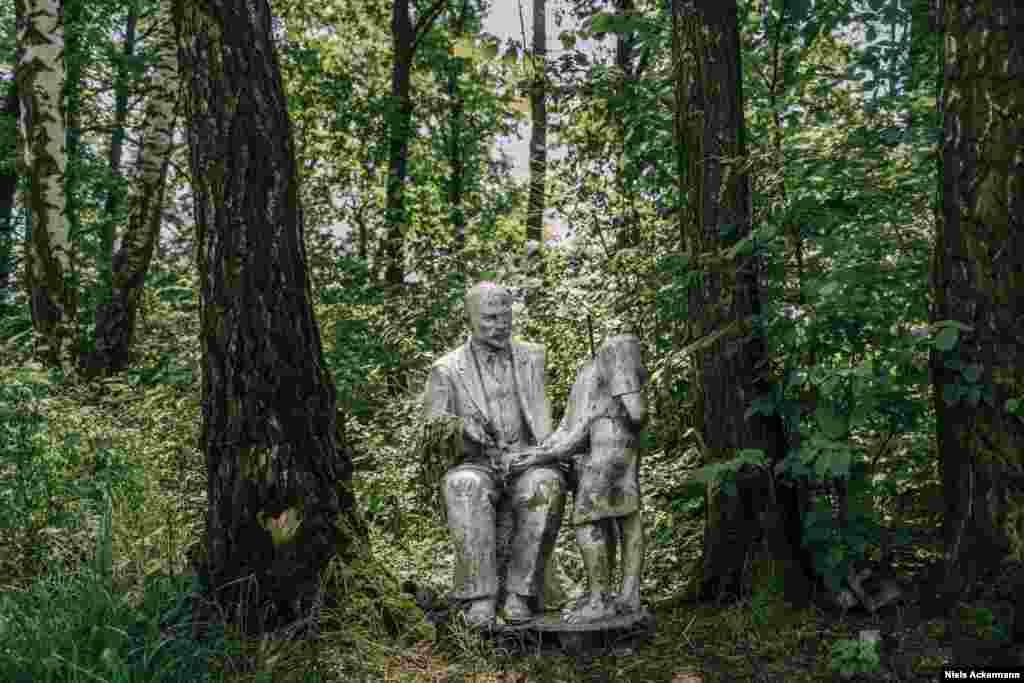
In Horbani, the mayor of the village hid a Lenin statue in the forest. Local youths built a table next to it and it became a popular hangout.

The Lenin of Cherkasy has been transformed into a Ukrainian Cossack and now welcomes visitors at the entrance to a sports club. The Cossacks once ruled the steppes of what is now central and eastern Ukraine.Their autonomy, and hostility toward the Russian Empire, has made them symbols of independence for modern Ukrainians.
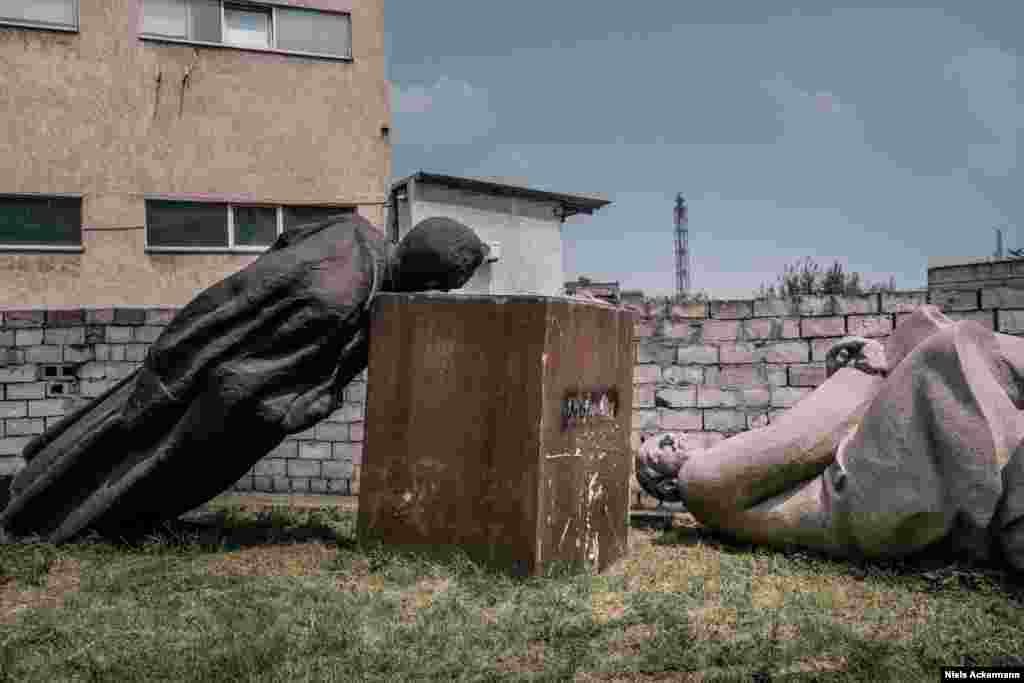
An unidentified Soviet hero (left), and Lenin in Kamianske
"I'm always upset when media use a simplistic approach saying, 'Oh, Ukraine is putting Lenin in dumps,' when there are lots of different stories," Ackermann says. "When the media simplify things too much, it just creates distrust toward the media."
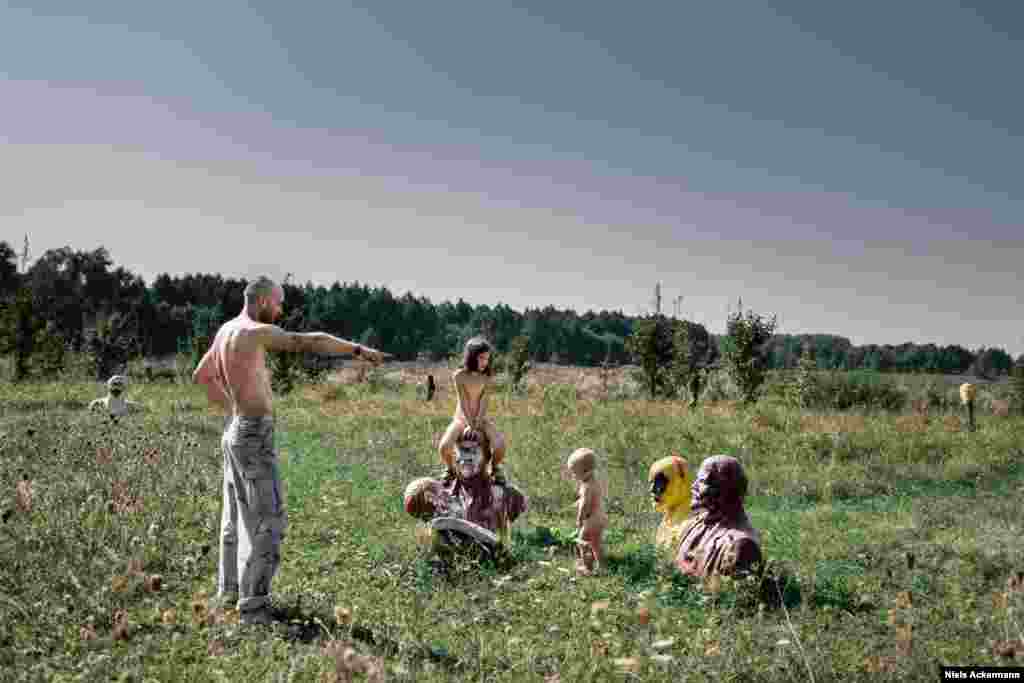
Artist Leonid Kanter has placed several Lenin monuments in his garden to give the natural world free reign over the monuments. Ackermann says "his goal is to show that you can be the most powerful leader on Earth, but in the end it is nature that will prevail."

Lenin heads for sale in Kryvyi Rih.
"It really puts in perspective all these dreams of leadership, which fuel many politicians, that yeah, you can be powerful and glorified, but in the end you may be sold for $150 in the trunk of a car," says Ackermann.
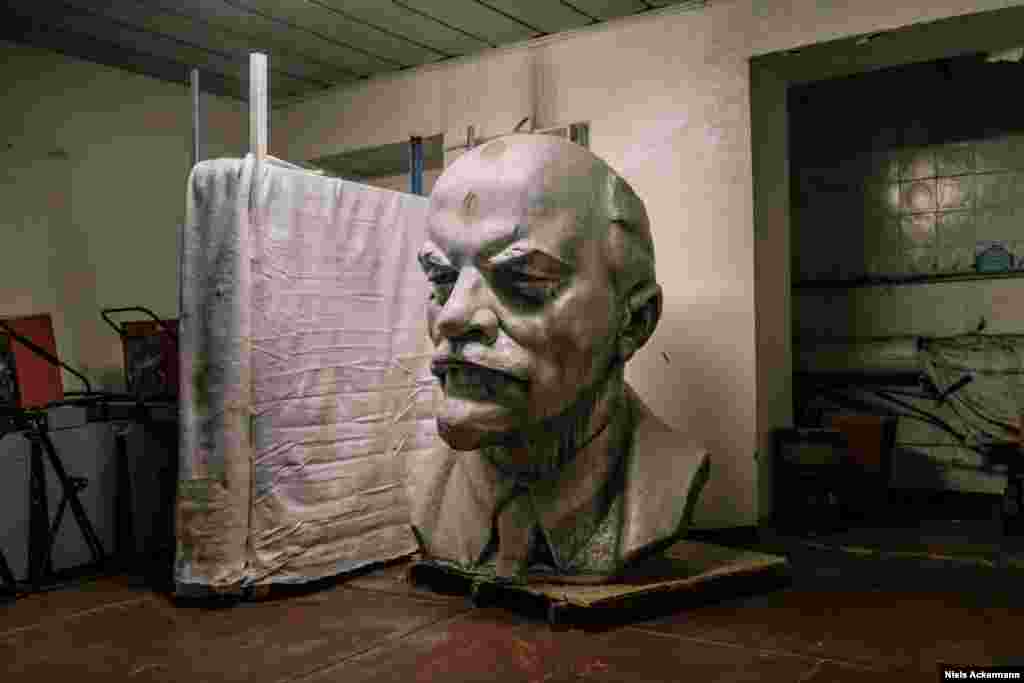
A giant Lenin in a storage room in Chernobyl. Ackermann was initially told by the local authorities that the head was too radioactive to be safely photographed.
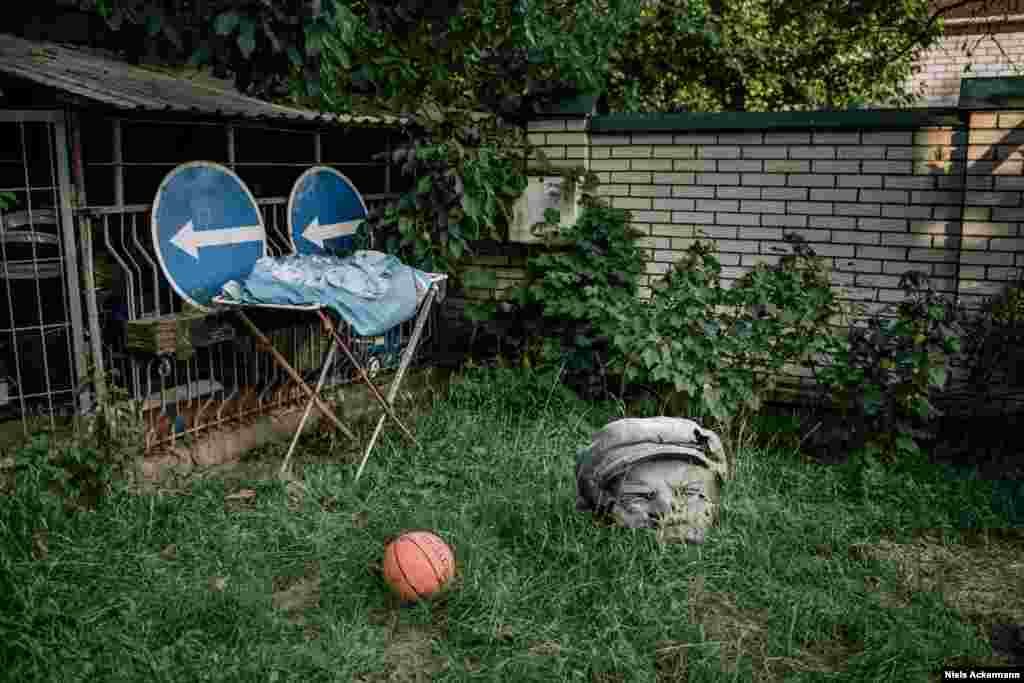
A Lenin head sits in the Kyiv garden of a volunteer who assisted the Ukrainian Army in fighting Russia-backed separatists. It was a birthday present from a group of soldiers she had helped.
![A blue Lenin in Podobovets Ackermann is preparing for an exhibition of the project in Moscow later this year, a show which is likely to attract controversy. "I want it to spark discussion. What would upset me is people using it as propaganda -- I don’t want Ukraine to use it to say, 'Look, we’re turning the page,' but at the same time I don’t want Russia to use it and say, 'Look at these vandals, they are behaving like [the Islamic State group] in [the Syrian city of] Palmyra.'”](https://gdb.rferl.org/a7998e75-fc52-43dc-a2b3-6b4e27f72b4a_w1024_q10_s.jpg)
A blue Lenin in Podobovets
Ackermann is preparing for an exhibition of the project in Moscow later this year, a show which is likely to attract controversy. "I want it to spark discussion. What would upset me is people using it as propaganda -- I don’t want Ukraine to use it to say, 'Look, we’re turning the page,' but at the same time I don’t want Russia to use it and say, 'Look at these vandals, they are behaving like [the Islamic State group] in [the Syrian city of] Palmyra.'”




